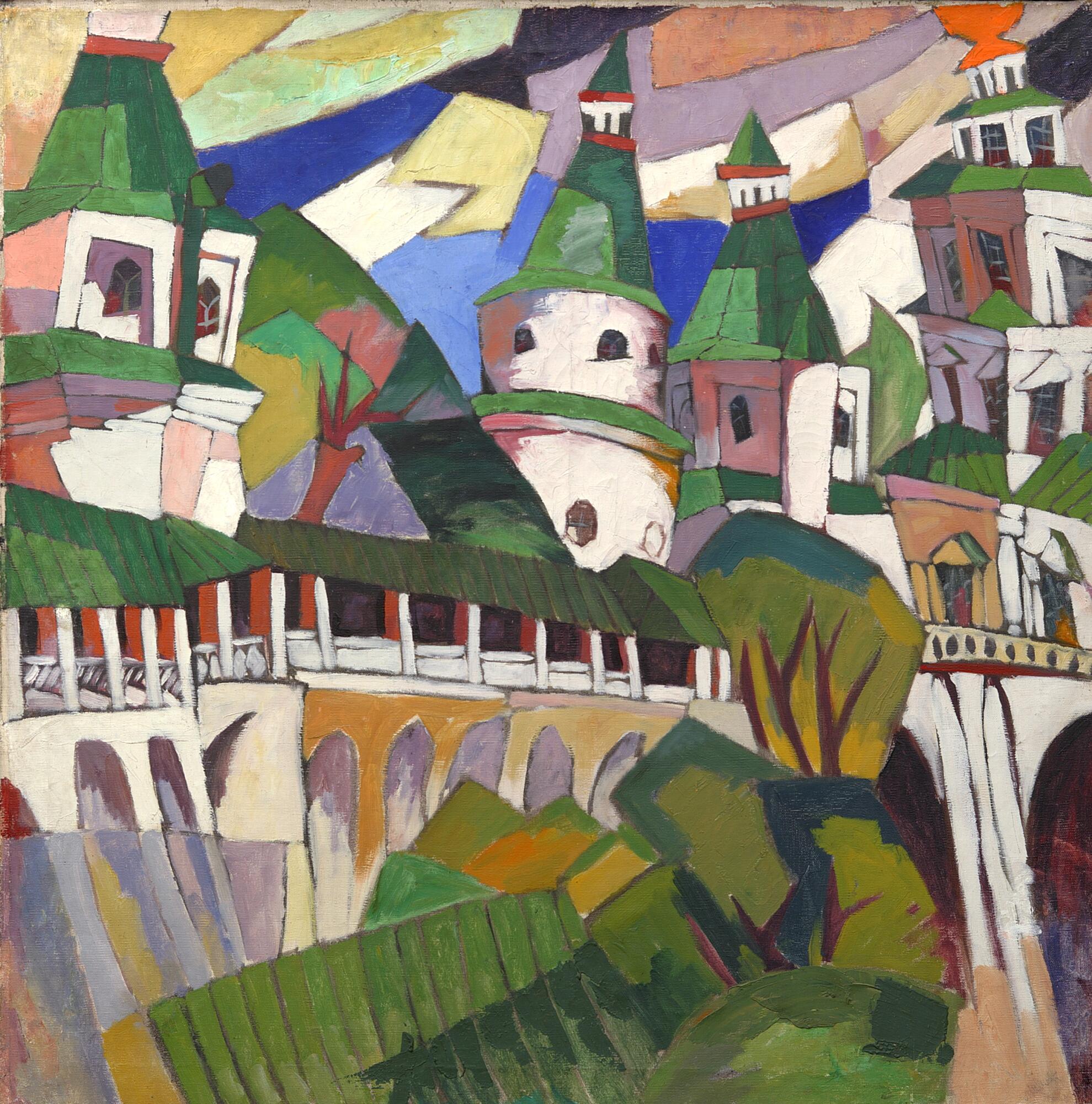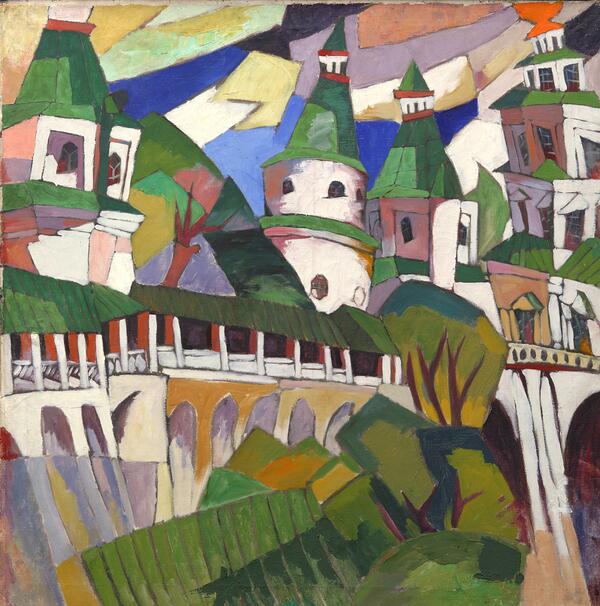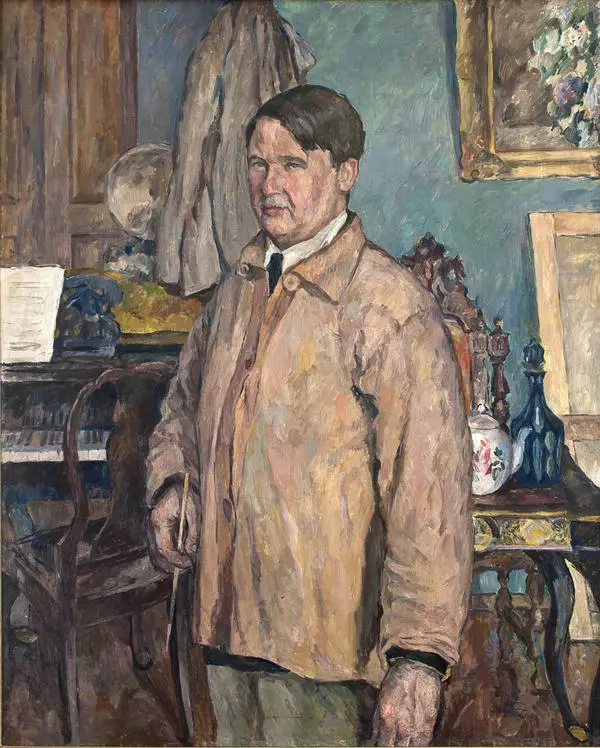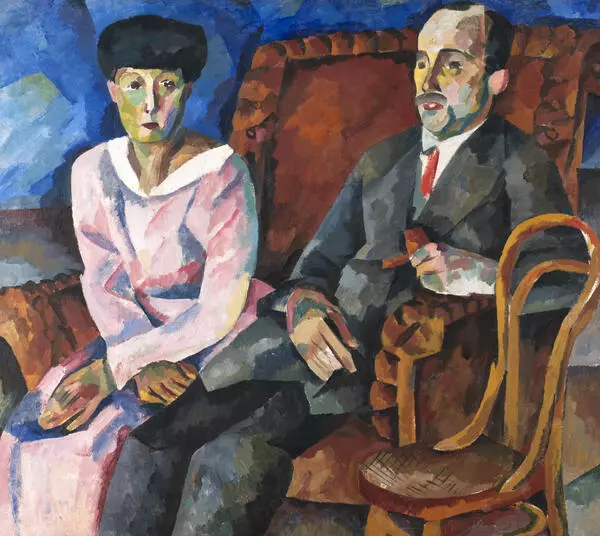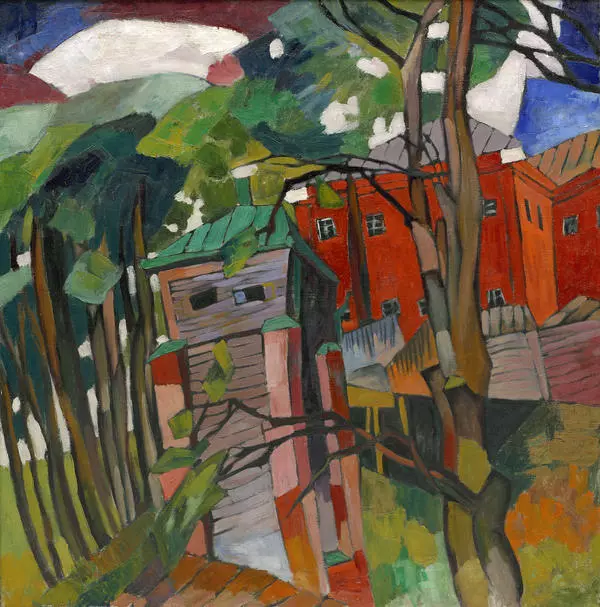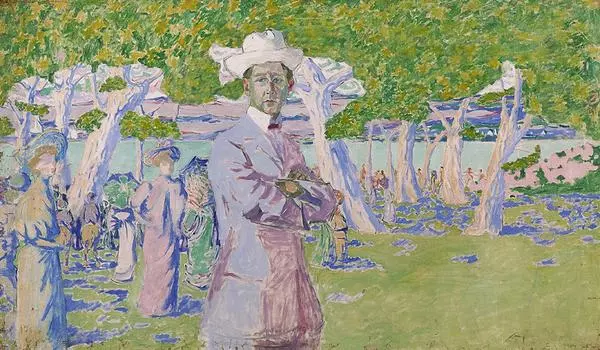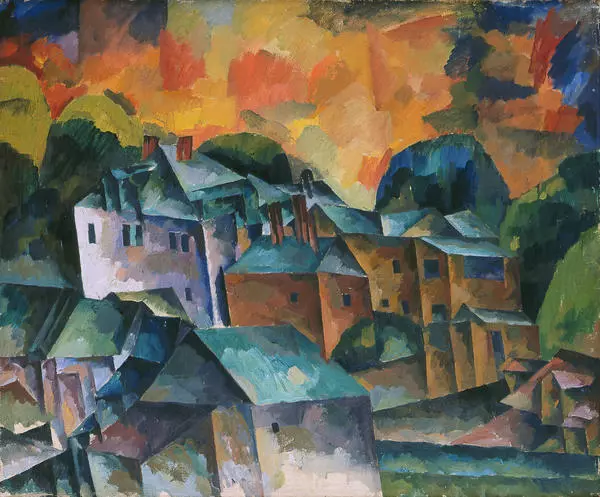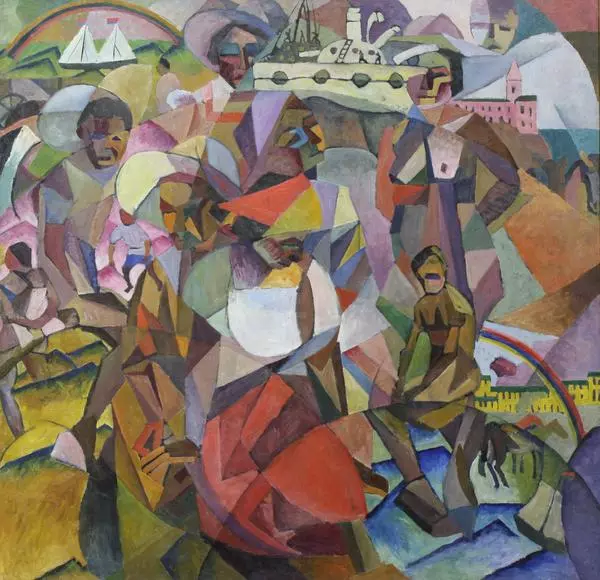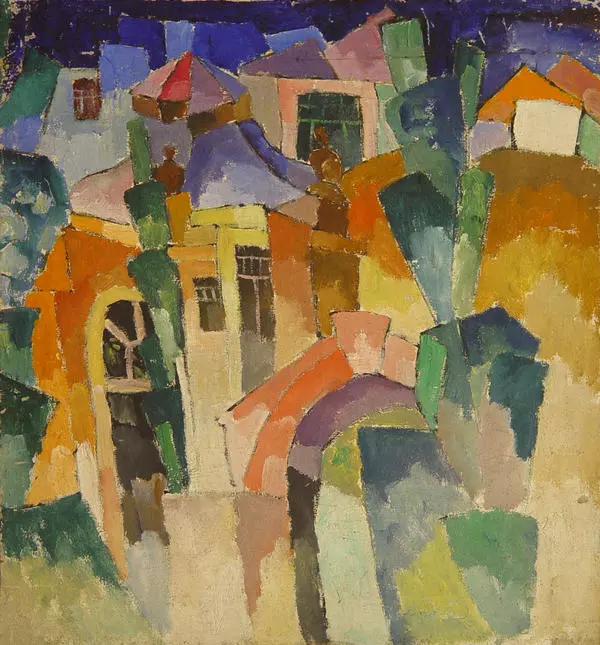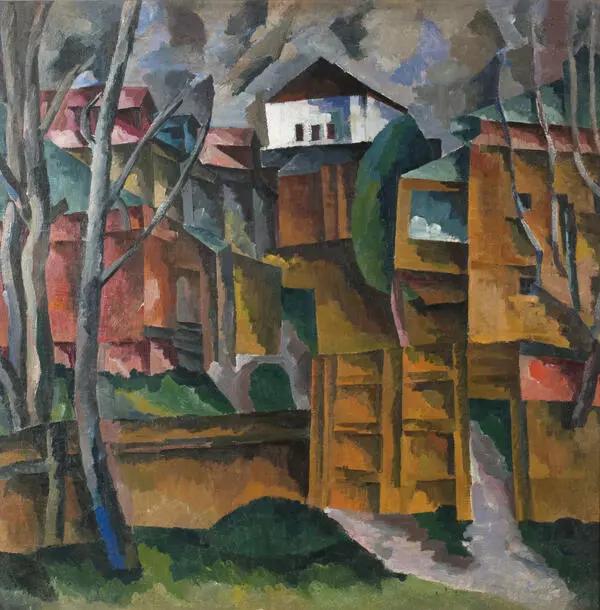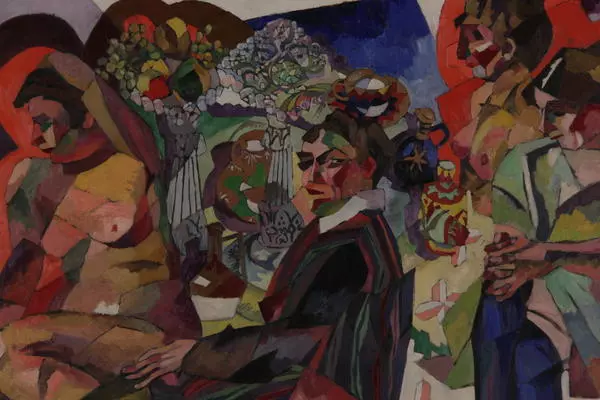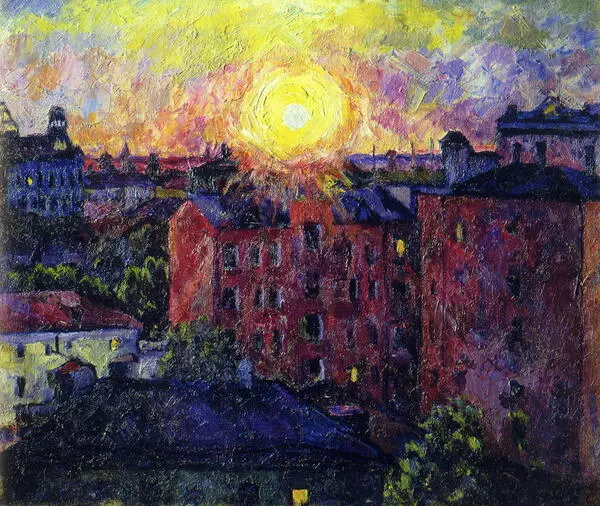Toward the end of the 1900s, the use of striking colorful brightness noticeably wanes, and variegation becomes less glaring and overzealous. The colors seem to ‘subside’, and the polychromatism that remains in the painting in its entirety loses its festive elegance, enchanting qualities, the pressure it exerts, and its tintinnabulation.
These are the pictures that are part of the New Jerusalem series, which includes the View of the New Jerusalem Church (1917). The color and figurative transformation of what is visible here is still quite perceptible, although it is no longer as accentuated as in the Moscow landscapes done by Lentulov in previous years.
The color palette, built on a rather energetic juxtaposition of softly shining planes of white, red, yellow, green and a number of transitional tones, visually lightens the buildings without depriving them of their spatial dimensions. The color overtones playing on the wall surfaces simulate the shape of cathedrals; the sculpturesque shifts of certain architectural elements not only impart a dynamic charge to the composition, but also reveal their place and significance in the design of the buildings.
Lentulov becomes visually more accurate and convincing here in the picturesque replication of the motif. He was well aware of this himself: ’ This summer I worked hard, and made a number of very powerful works with a strong inclination towards the complete rejection of previous abstract systems, while reserving my right, in the interests of what is purely figurative and compositional, to sometimes violate the laws of perspective or anatomy, preferring an oblique form of academic rigor and naturalistic plausibility » .
In the landscapes done during the summer of 1917 in New Jerusalem on the Istra River, the features that he indicated are not felt as much as something more theatrical, decorative. They are deprived of the corporal tangibility and genuine solidity that is typical on the canvases of the other « Jack » artists. It seems as if they were made from lightweight stage mockups, devoid of the heavy brawn of a real architectural landscape. It is possible that the effect from Lentulov’s first experience in the theater gives itself away: in 1915-1916, he designed the set for Shakespeare’s The Merry Wives of Windsor at the Chamber Theater. This painting belongs to the New Jerusalem landscape series, where the color brightness present in his former « enchanting » Moscow canvases noticeably « subsides “.
